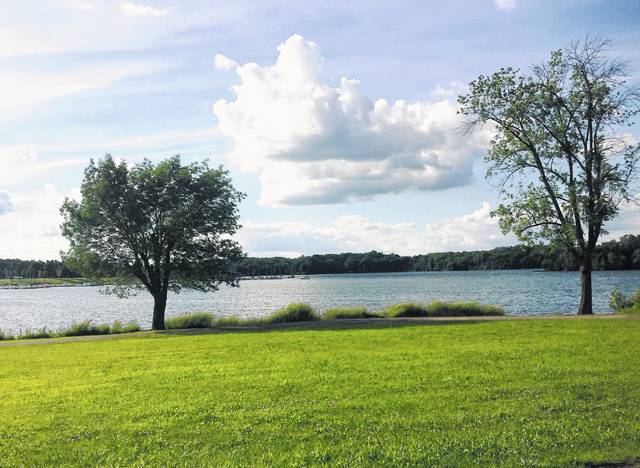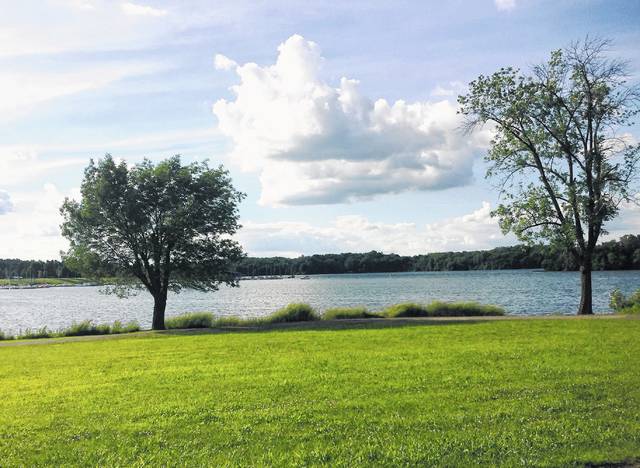

With many traditional jobs disappearing since the 1990s, southern Ohio and other scenic parts of the country are hoping tourism will help rebuild the economy by tapping into history and their rugged natural beauty.
Efforts to promote the scenic wonders of Highland County and the surrounding region have been on the upswing, said Destiny Bryson, director of the Highland County tourism bureau.
Bryson said Tuesday that more people are realizing that tourism transfers to economic development, often with affordable marketing costs.
And while local residents are inclined to think of Highland County’s relative isolationism as a drawback, people from more metropolitan locales see this region’s “uncontrolled environment” as an asset.
“People want to unplug,” said Bryson. “We’re so plugged-in all the time. People are not so much looking for something to do, they’re traveling to get away from doing so much.”
The tourism bureau recently launched a project to come up with a logo and tagline for Highland County, and Bryson said many responses have come from outside the area.
“They played off words like ‘beauty,’ ‘nature’ and ‘hills,’” she said.
Bryson said Ohio’s weather, which reflects the four seasons, is attractive to residents from parts of the country where the climate doesn’t change much. She said parents want to enjoy natural environs with their children in an age where they don’t feel as free to let their kids roam alone as much as they could in past generations.
The Highlands Nature Sanctuary-Arc of Appalachia promotes numerous tourism and nature events, including the Rocky Fork Gorge, a 2,200-acre preserve with “a 100-foot high steep-walled canyon renowned for its stunning rock formations, ancient white cedars, spectacular wildflower displays, grottoes, springs and stone arches.”
The Highland County Historical Society sponsors numerous events highlighting local attractions and historic events and settings, ranging from cemetery “ghost walks” to Ohio History Connection events during the Festival of the Bells to log cabin cookouts. Historical society officials spent much of 2017 remembering the “marching mothers” who fought to integrate Hillsboro elementary schools in the 1950s.
Similar efforts are happening elsewhere across the region and the country. A Shawnee, Ohio, event re-enacted a Prohibition rally outside the real-life former speakeasy. In Corbin, Kentucky, they’re constructing an elk-viewing area on a former mountaintop mine. Virginia’s Crooked Road traces country music history. Ohio’s Winding Road takes visitors back to the birth of the U.S. labor movement.
“We’d like to promote Appalachia as an exotic, interesting place, not the Godforsaken place that we usually get in the national press,” said Todd Christensen, executive director of the Southwest Virginia Cultural Heritage Foundation.
For Ohio activist John Winnenberg, the rebirth goes deeper. As eastern Ohio has endured boom-and-bust cycles — of timber, coal, clay and, lately, oil-and-gas extraction — residents have internalized a sense of futility and abandonment that’s hard to shake, he says. That mentality could fade if locals succeed in building their own tourism-based economy. “We’ve been owned before,” said Winnenberg, director of The Winding Road initiative centered in historic Shawnee. “We don’t want to be owned again.”
The promise of a new future for coal country is not new. Billions of dollars have been spent closing, reclaiming, reforesting and redeveloping abandoned mine land since the Federal Mine Safety and Health Act passed 40 years ago.
What’s fresh is the new energy among baby boomers and millennials alike, who seem to enjoy the Rust Belt chic of enjoying a drink or overnight stay in a place full of authentic stories built on sweat and strife.
In Nelsonville, Ohio, Sunday Creek Coal Co. was among dozens of companies that thrived in eastern Ohio during mining’s heyday, 1850 to 1940. Vestiges of that era — opera houses, speakeasies, union halls, railroad depots — are being preserved and promoted for tours, lodging and quirky events like the re-enactment of a Prohibition rally.
“It’s not creating tourism just for other people. We’re going for ourselves as well,” said Winnenberg.
The Corbin, Kentucky-based Appalachian Wildlife Foundation is developing an ecology education site on Kentucky’s first mountaintop removal coal mine.
“Capitalizing on the wildlife of the region for conservation, based on our work, turned into a tourist attraction,” said board chairman Frank Allen.
A wildlife center rich with elk, deer, bear and more than 260 species of birds will open in 2019 while mining operations continue nearby. An economic impact study predicts the 19-square-mile tract of former mine land will attract 638,000 annual visitors, generate $124 million in annual spending by its fifth year and create 2,300 jobs.
“The mining has created phenomenal elk habitat. Elk are, by nature, prairie animals, and the grassland habitat that’s created when the coal mines are restored is very conducive to the elk,” Allen said. “It’s kind of the ultimate irony: The ‘evil’ mountaintop removal process and, all of the sudden, it’s created the ideal habitat for wildlife.”
The Monday Creek Restoration Project in New Straitsville, Ohio, gave locals their first look at a clear-running stream in generations, according to project manager Nate Schlater.
“The stream where a lot of my work has been focused, Monday Creek, was a dead stream, declared possibly unrecoverable in 1994,” he said. “Today, there’s 36 species of fish living in the stream, it’s nearing achieving EPA warm water habitat status. People are now fishing in the stream. My grandkids are catching fish where there’s never been a fish in my lifetime.”
Coal country overwhelmingly supported President Donald Trump, who pledged to reverse coal’s decline, but just 1,200 new mining jobs have been created across the region since January. That can’t make up for the hemorrhage of the past: In Southwest Virginia, mining employment plunged 45 percent from 1990 to 2014.
Even those with good coal jobs sometimes feel they need backup plans. Rodney Embrey loves his job in communications at the Buckhingham mine in Corning, Ohio, but he’s also started a lucrative side business with a friend selling antiques. Their store is in a building once slated for demolition as an eyesore. “It was a dry goods store when it opened up” in 1905, he said, an era he and others call “the boom.”
The new economy appears to be attracting jobs, tourists and even new residents to the Virginia region that’s furthest along in its efforts. One study there found that arts, entertainment, recreation and related fields added over 5,000 jobs between the year 2000 and 2014. The region’s professional, scientific, education and health sectors also grew by double-digit percentages in 15 years, the study found, as millennials in tech and other location-flexible industries select the region for its down-home charm and outdoor recreation.
“We’ve lost many, many more jobs to coal losses than we’ve attracted,” Christensen said. “But what we’re also finding is that communities that have embraced the creative economy have seen an influx of 25- to 34-year-old college-educated people moving in. We can’t say it’s related, but there’s a correlation.”
He added that visitors often come in with a “stereotype of what they think they’ll find. … Nine times out of ten, they leave with a different perspective than what they brought.”


